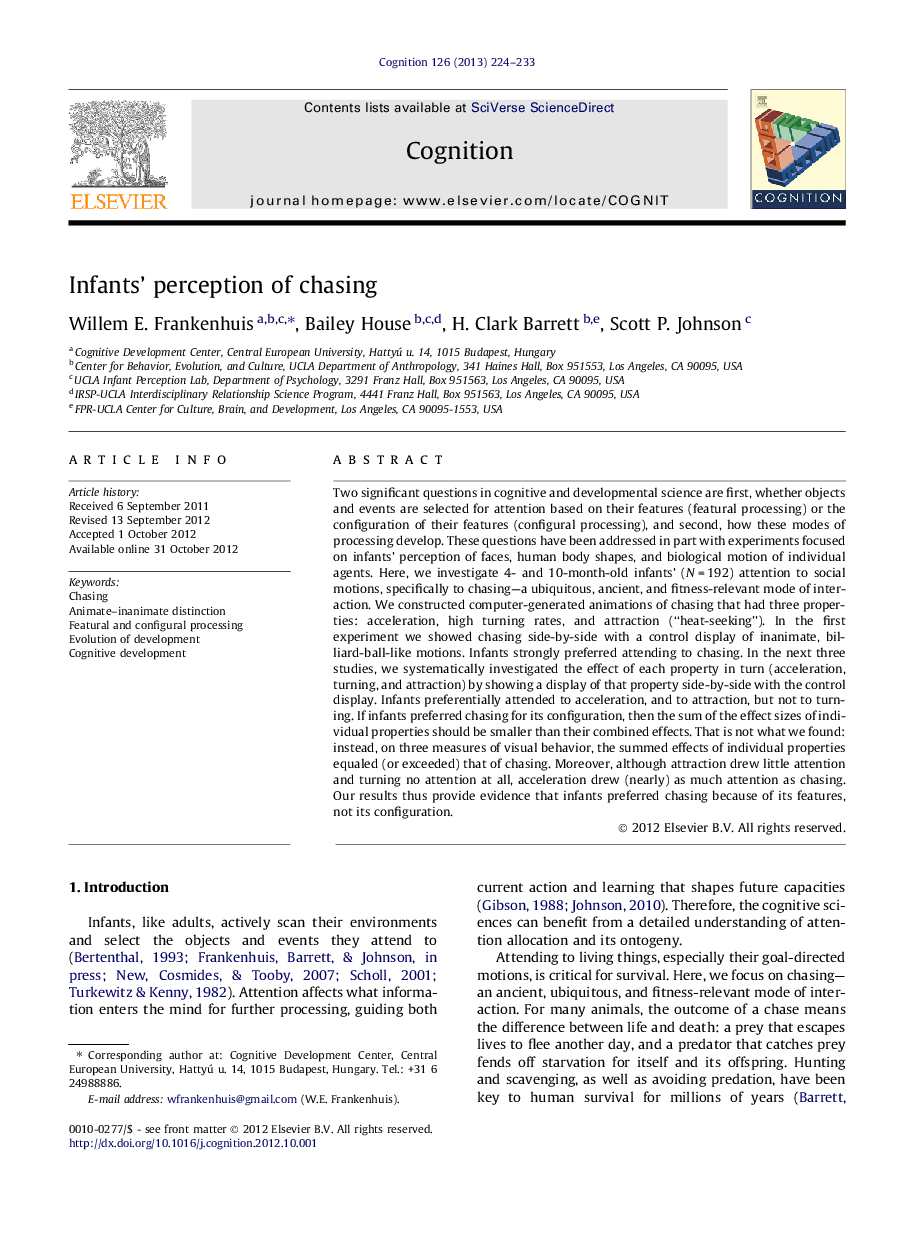| کد مقاله | کد نشریه | سال انتشار | مقاله انگلیسی | نسخه تمام متن |
|---|---|---|---|---|
| 926456 | 921868 | 2013 | 10 صفحه PDF | دانلود رایگان |

Two significant questions in cognitive and developmental science are first, whether objects and events are selected for attention based on their features (featural processing) or the configuration of their features (configural processing), and second, how these modes of processing develop. These questions have been addressed in part with experiments focused on infants’ perception of faces, human body shapes, and biological motion of individual agents. Here, we investigate 4- and 10-month-old infants’ (N = 192) attention to social motions, specifically to chasing—a ubiquitous, ancient, and fitness-relevant mode of interaction. We constructed computer-generated animations of chasing that had three properties: acceleration, high turning rates, and attraction (“heat-seeking”). In the first experiment we showed chasing side-by-side with a control display of inanimate, billiard-ball-like motions. Infants strongly preferred attending to chasing. In the next three studies, we systematically investigated the effect of each property in turn (acceleration, turning, and attraction) by showing a display of that property side-by-side with the control display. Infants preferentially attended to acceleration, and to attraction, but not to turning. If infants preferred chasing for its configuration, then the sum of the effect sizes of individual properties should be smaller than their combined effects. That is not what we found: instead, on three measures of visual behavior, the summed effects of individual properties equaled (or exceeded) that of chasing. Moreover, although attraction drew little attention and turning no attention at all, acceleration drew (nearly) as much attention as chasing. Our results thus provide evidence that infants preferred chasing because of its features, not its configuration.
► Infants preferentially attend to chasing over control motion.
► This preference is driven by accelerations and attraction (or “heat-seeking”).
► It is not driven by high turning rates even though adults perceive these as animate.
► Effect sizes of cues to chasing add linearly or in a marginally diminishing fashion.
► Infants’ attention to chasing is driven by its features, not their configuration.
Journal: Cognition - Volume 126, Issue 2, February 2013, Pages 224–233